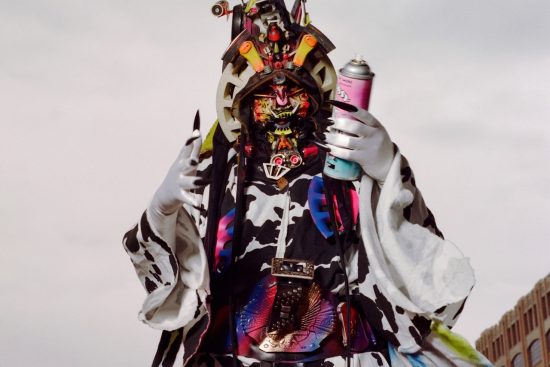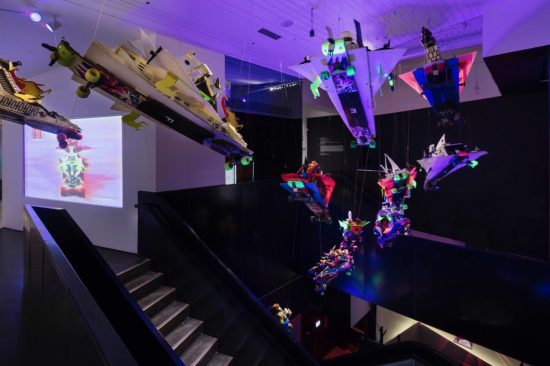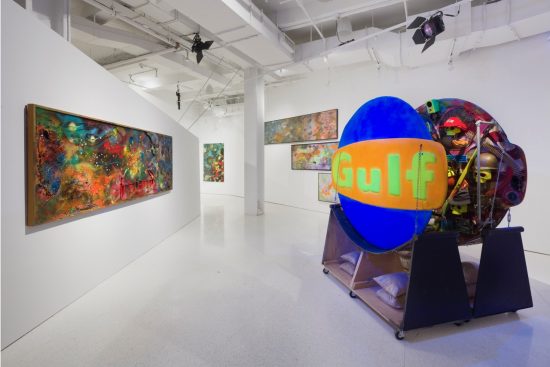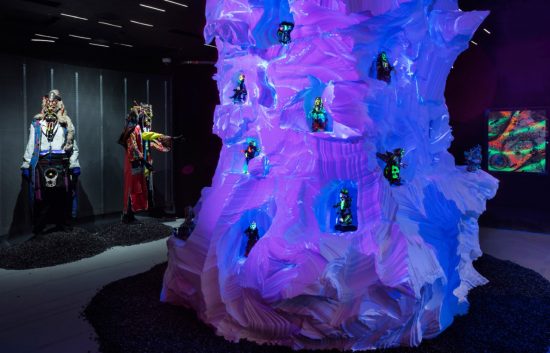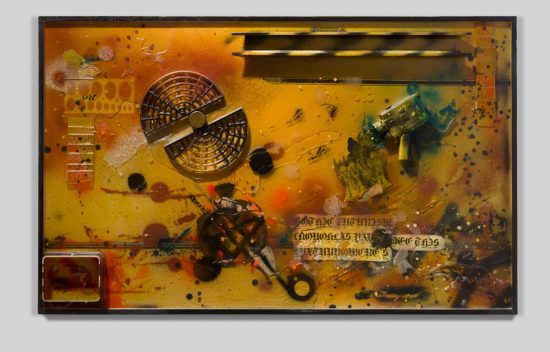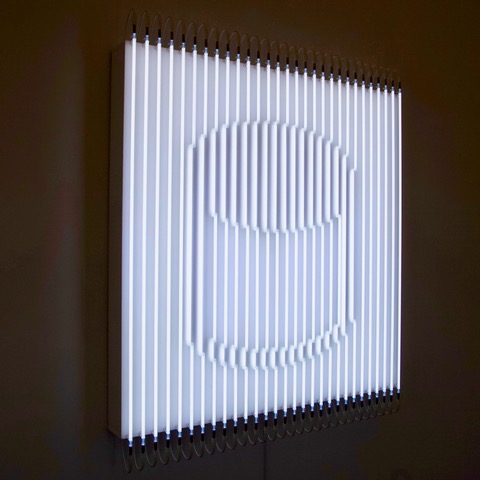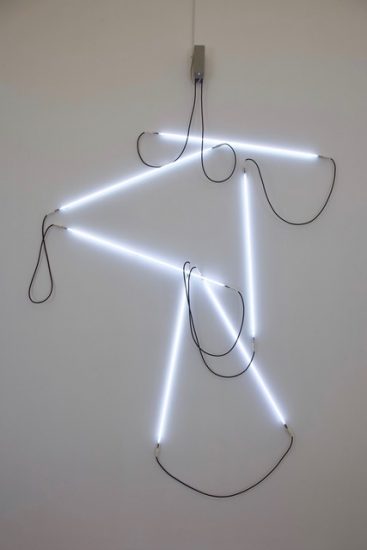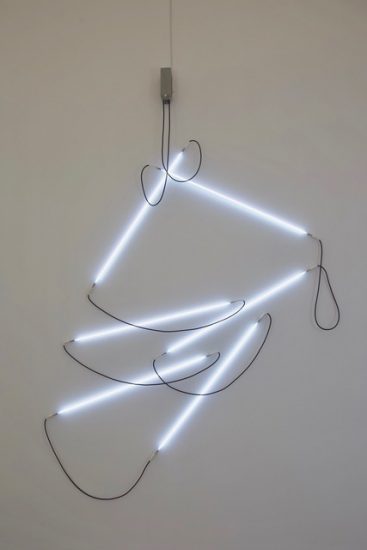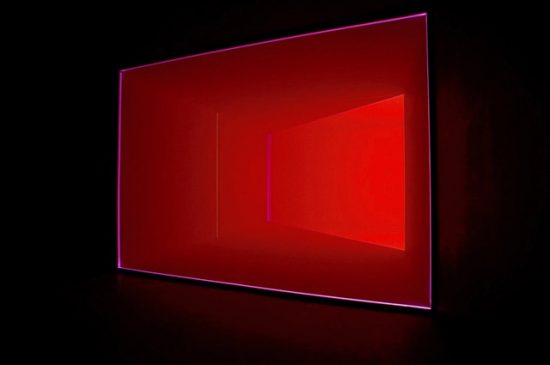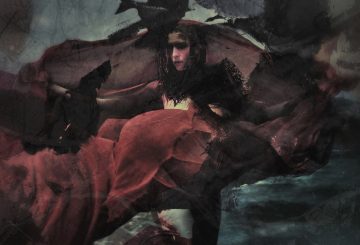George Shaw? He’s already on vacation…
How to flesh out the other-worldly creative force that was The RAMM:?LL:Z?? (1960-2010)? Perhaps an explanation in his own words of the name or “equation” he adopted by deed poll in 1979 might help:
“MILITARY FUNCTION FORMATION EQUATION RAMM X ELLE =Z%E%X=EMILITARY FUNCTION RAMM*ELEVATION*ZMILITARY FUNCTION FORMATION RAMM*SIGMA*LL*Z*SIGMA, SIGMARAM plus M for Magnitude, Sigma (?) the first summation operator, first L–longitude, second L–latitude, Z–z-bar, ?, ?–summation”
No? Okay. Let’s get linear. Ramm:ell:zee came to prominence as a tagger/bomber/graff artist in the train yards and subway tunnels of New York in the mid-to-late 1970s. Adept at using the alphabet to create more than just a signature or hollow inanities, his paint-bombing missions were not about ‘decoration’ but coded communication instead. To Ramm:ell:zee, language was historically hegemonic, it was an “act of violence” he worked at freeing through his iconoclastic and individualistic representation of words. As the character Ramm:ell:zee emerged from the underground darkness, so too did a series of complex and esoteric manifestos that together formed the foundations of a cosmology described as Gothic Futurism, a spectacular blend of philology, astrophysics, and medieval history; as well as the concept of Ikonoklast Panzerism, a creative process that “turns language against itself in order to liberate it.” At the start of the 1980s, Ramm:ell:zee was also stretching his talents as an MC and rapper in the city’s burgeoning hip hop scene, recording the seminal track Beat Bop with Jean-Michel Basquiat. By the end of the decade, Ramm (as he was also known) had moved from the streets into the studio applying his ideas about Gothic Futurism to painting, sculpture, performance art, costume design, and jewellery design.
In the early 90s, as his epistemological output accelerated, Ramm:ell:zee became increasingly reclusive retreating to his home/studio/loft in Tribeca known as The Battle Station. As his personality fragmented, he developed twenty elaborate personae that he embodied in ornate, tricked-out costumes and manifested in bizarre performances, which he referred to as The Garbage Gods; ‘garbage’ because all the costumes and related sculptural works were forged from the city’s detritus. Ramm:ell:zee’s street foraging not only provided raw material for his creations, but also gave him a stage in which to roam in full gear, as one of the garbage gods. Around this time, the series Letter Racers, sculptural letter warriors mounted on skateboards and toy cars, and Monster Models, action figures derived from samurai tradition, science fiction, and medieval weapons, began to proliferate in his studio. Living a chaotic personal and artistic life in an equally chaotic studio environment added to Ramm:ell:zee’s waning health, which was directly impacted by the stubbornly unprotected use of epoxy resin on everything from assemblages and costumes, to sculptural paintings and installations. Unfortunately, while his mind never stopped working, his lungs and heart did in 2010 at the age of 49.
Above: [all pics] Ramm:ell:zee, Racing for Thunder, (installation view)
At Red Bull Arts in Manhattan, you can lose yourself in RAMM:?LL:Z??: Racing for Thunder, a thirty-year retrospective that is impressive both for the artist’s prolific output and granular practice, as well as the depth of detail the curators have generously and exhaustively brought out into the light. The vast, two-floor exhibition space frames Ramm:ell:zee’s influence and pays homage to the artist with an astonishing collection of artworks in various media, music, writings, archival documentation in print and video, ephemera, oral histories, and media interviews. Word.
Francois Morellet, Ready Remake (Monet), 2009
Francois Morellet, Ready Remake (Manzoni), 2012
Francois Morellet, Gesticulation I, 2009
Francois Morellet, Gesticulation II, 2009
While the New York summer sun does double duty blinding and wilting passersby on Madison Avenue, anyone interested in art will have a more pleasant experience of light inside number 909. On the ground floor of this ample and elegant Upper East Side townhouse that serves as the Levy Gorvy Gallery, neon sculptures by the late French artist Francois Morellet (1926-2016) mark the beginning of his representation in the United States with the exhibition Neon in Daylight. Although well-known as a rigorous painter of non-objective art, primarily geometrical abstraction and minimalism, Morellet began experimenting with light in the 1960s as part of the Paris collective Groupe de Recherche d’Art Visuel. Neon in Daylight includes works from the Ready Remake series in which Morellet’s shaped neon tubes – installed against white, reflective paint backgrounds – create silhouettes and reliefs referencing popular art works such as Manzoni’s Merda de Artista (1961), Monet’s Haystacks (1890), and Duchamp’s Fountain (1917). Repetitive arrangements of white neon tubing usually leave me cold, however, Morellet’s ‘ready remakes’ sustain prolonged pacing from left to right and back again, as the viewer’s eye-to-brain coordination gets a workout. By contrast, two sculptures taken from the Gesticulations series hang freer and wax more lyrical, while echoing Morellet’s sprawling floor works of neon rods and miles of foot-snagging cords.
James Turrell, Wedgework V, 1974
The gallery’s second floor has been reconfigured to fit James Turrell’s Wedgework V, which projects light into a blocked-out half-floor space to create the impression of a solid structure. Although most Turrell works I had experienced at that point had been either site-specific or executed in large, boxy museum spaces, here I was asked to stand passively in an inky dark viewing area to look into the coloured space ahead. Nevertheless, such is Turrell’s mastery of light that even in a relatively small space the work appears to exist well beyond the logical, architectural constraints of the gallery. The perfect blend of the uncanny and sublime makes it possible to suspend your disbelief long enough to feel like you’ve been inserted into a VR scene. On a side note, in order to control the illusion by conjuring the softness of focus necessary to civilise the intensity of the coloured light, the space had to be blacked out first like a vampire’s lair (hence the low-quality accompanying image). To enter the viewing area, you must navigate a narrow L-shaped corridor, which in my case proved to be a challenge as I did a good impersonation of a wind-up toy pushing obstinately into a corner. That is until an invisible hand grabbed my arm and a gentle, disembodied voice guided me into the light. It remains the closest experience I’ve had to God reaching out.
